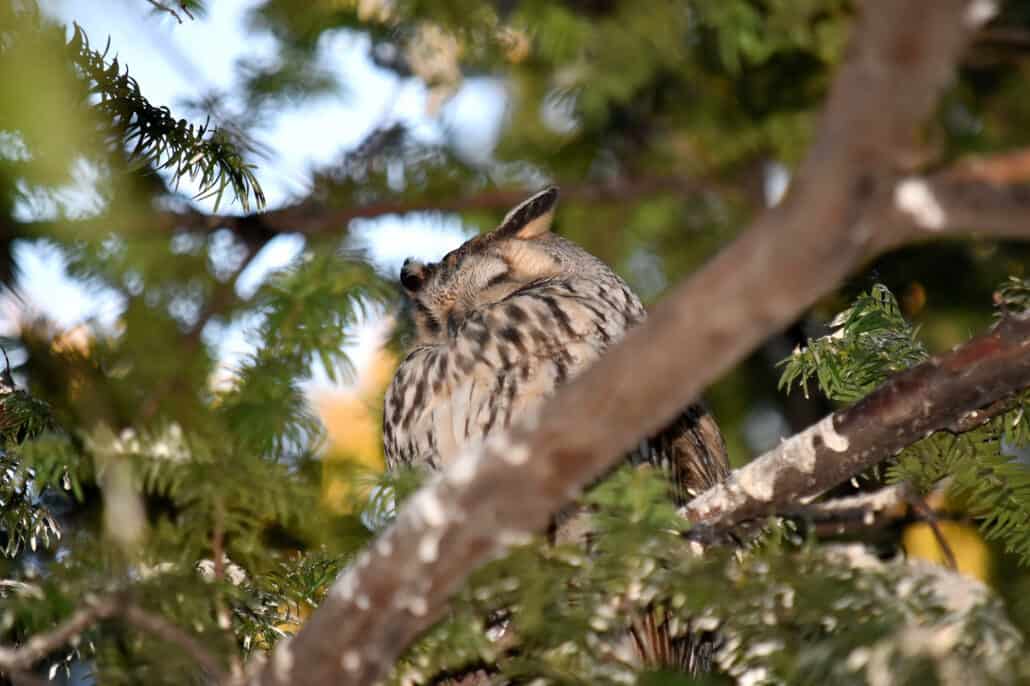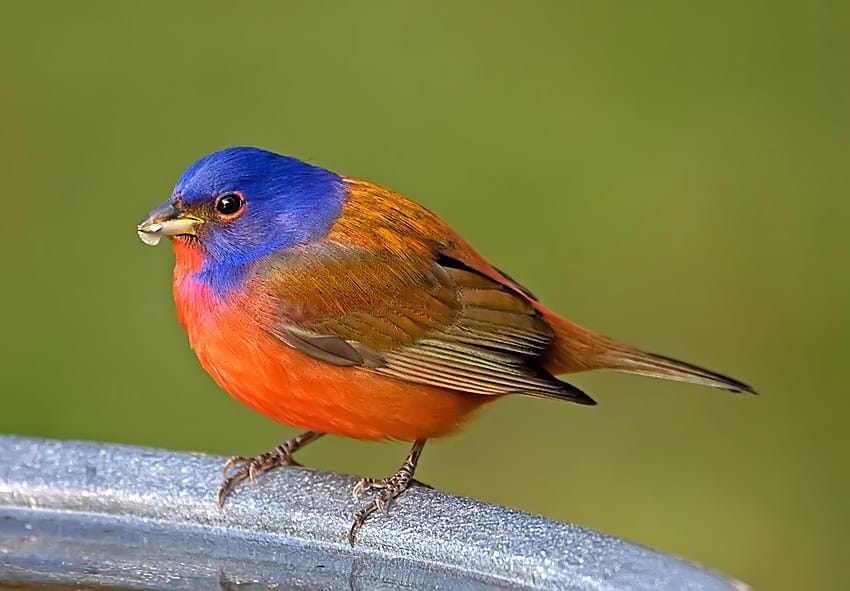Before falling asleep, most birds seek shelter from predators and weather. This is vital to their survival because a sleeping bird is more vulnerable to danger.
As you might imagine, each species has a technique of locating shelter as unique as its methods of finding food, and this varies based upon options available in the environment.
Cavity nesters (bluebirds, chickadees, titmice, some woodpeckers and swallows, for example), tend to roost in enclosed areas such as tree hollows, bird houses, caves, or culverts. Sparrows, warblers, thrushes, and other songbirds frequently roost for the night amid thick vegetation. At all times, it’s important that they remain concealed from owls, raccoons, snakes, and other predators.
At night, birds can dramatically slow down their body’s metabolic rate (the rate at which the body consumes energy) and lower their body temperature to conserve energy. During very cold nights, small birds such as chickadees and nuthatches might find a tree cavity or birdhouse where they can spend the night, huddled together with several other birds of the same species. Such communal roosting permits the birds to share body heat.
Most birds will fly at night only if necessary. The reason for this is that their eyes, like human eyes, are not designed to see in nighttime conditions. If a bird cannot see well, it risks injury by flying at night. Unless startled into flight by a predator, most birds will avoid leaving their nighttime roost.
Other species, such as owls and nightjars (nighthawks and whip-poor-wills) fly primarily at night, their most active time, and sleep during the day. Nocturnal birds have specially adapted eyes and ears that make it possible for them to sleep during the day and stay awake at night.
The pupils of the eyes of these nighttime birds are much larger than the pupils of our eyes. The large pupils gather much more of the available light than our eyes do.




